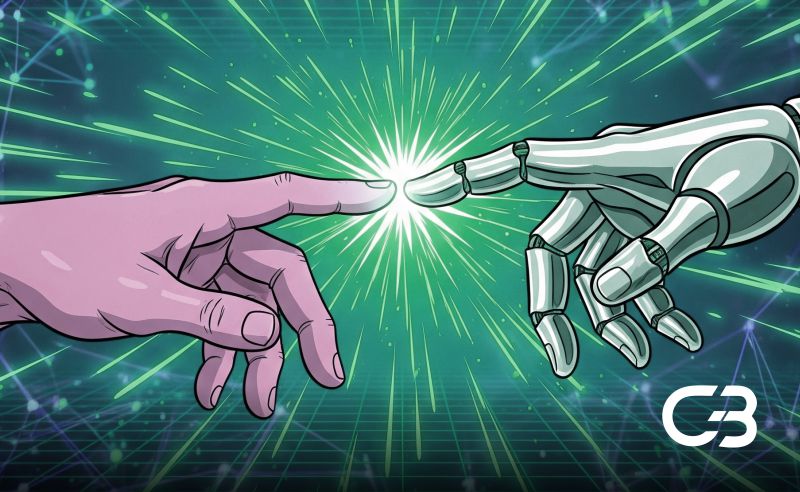Blockchain protocols use the forks to change the features and ensure global net security through decentralization. Hard forks impose backward-incompatible upgrades and permanently divide networks coming into parallel chains. Soft forks present backward-compatible rule changes, and maintain one unified chain across the world.
What Is a Blockchain Fork?
A blockchain fork is the split in the chain paths, which takes place intentionally when developers change the consensus rules. Accidental forks can additionally happen when mining pools construct blocks at the same time and produce temporary block chains. Thus, intentional forks will enable communities to settle on new protocols and features as a community.
Forks can transact as a governance instrument to empower decentralized decision making among stakeholders on a network. Developers, miners, and node operators consider changes to proposed rules before activation dates. Furthermore, signals encourage transparency as they make the change of protocols and histories of variations publicly recorded.
What Is a Hard Fork?
A hard fork aggressively imposes a set of protocol changes, which are incompatible with legacy consensus. In this way, nodes utilizing outdated software will be unable to verify blocks produced with new sets of rules. Thereby the network is divided and broken into chains that will exist independently when activated.
Hard forks also need some consumers to agree on client releases, activation block heights and testing procedures. Producers can post new software and miners gesture preparedness by posting version flags into the block headers. In the meantime, full nodes will need to upgrade so as to impose new consensus rules and prevent chain divergence.
What Is the Reason Behind the Hard Fork?
Hard forks are sought by developers in the case of protocol changes that require non backward-compatible upgrades in the core protocol. Moreover, hard forks are used when governance conflict cannot be resolved through minor changes. They also enable radical feature additions like novel consensus algorithms or token economics.
In 2016, Ethereum underwent a hard fork to recoup funds stolen in an attack on the DAO, and officially tokenized the Ethereum platform. In the same manner, Bitcoin Cash forked off of Bitcoin in 2017 citing controversial block-size scaling approaches. These instances can show how communities use hard forks to impose significant changes in protocol in an authoritative manner.
What Is a Soft Fork?
A soft fork enhances prior rules of consensus without breaking compatibility with old nodes. Upgraded nodes also impose different validation rules, but they still communicate with non-upgraded peers. Consequently, the blockchain is kept together and does not run the risk of being fractured by the network.
Soft forks depend on the rate of adoption to make the new rules adequately enforced. Version bits are added to client code by developers, and signals of support included in blocks by miners. After adoption rates satisfy consent values, nodes start to impose the stricter validation requirements.
What Is the Reason Behind Soft Fork?
Soft forks are adopted by developers when they want to make small changes to the network without significant disturbance. They handle such problems as weaknesses in transaction malleability, fee optimization, and increased privacy. Soft forks can therefore keep the service running smoothly, and slowly enhance the protocol capabilities in the long term.
A Segregated Witness soft fork in 2017 fixed Bitcoin scaling and removed transaction malleability vulnerabilities. Most recently Taproot activated further enhanced scripting and privacy capabilities with a backward-compatible update. The cases illustrate how soft forks drive long-term innovation processes without any disruptive breakouts.
Difference Between Hard Fork and Soft Fork
Hard and soft forks differ in that hard forks nullify backward compatibility and form two parallel chains, but soft forks maintain continuity of a single chain. Hard forks require explicit user upgrades with threats of replay attacks, whereas soft forks reduce the intended scope safely. Hence, the hard fork is more appropriate in radical overhauls of the protocols and reset of governance problems than soft forks.
On the other hand, soft ones are good at digressing security updates, performance, and feature optimization. They simplify the coordination and minimize the conflicts among the stakeholders in upgrading procedures. In such a way, these trade-offs are considered by the participants when they make decisions about hard and soft fork strategies
Hard forks vs. soft forks – which is better?
Both types of forks have their areas of perfection; as such no one type is superior in all instances. Hard forks bring wide functionality along with the danger of network disintegration and division of opinion in specified situations. Soft forks provide more secure releases, but they constrain updates strategically to prevent the theft of backward-compatibility.
Before a fork model is chosen, stakeholders consider such factors as urgency, the scope of upgrade, and their risk tolerance. Teams might desire harder forks in high-stakes situations where the rewriting of the entire protocol and reset can be desired. In comparison, soft forks have the advantage of protecting network cohesion when improvements to features are performed gradually.
Conclusion
Forks in blockchains enable decentralized networks to develop without interference of central authority in an efficient manner. The stakeholders strike a balance between the hard and soft fork methods depending on the magnitude of changes, the level of risks, and coordination requirements. These governance mechanisms eventually lead to the development of protocols, network robustness and sustainable cryptocurrency ecosystems.









